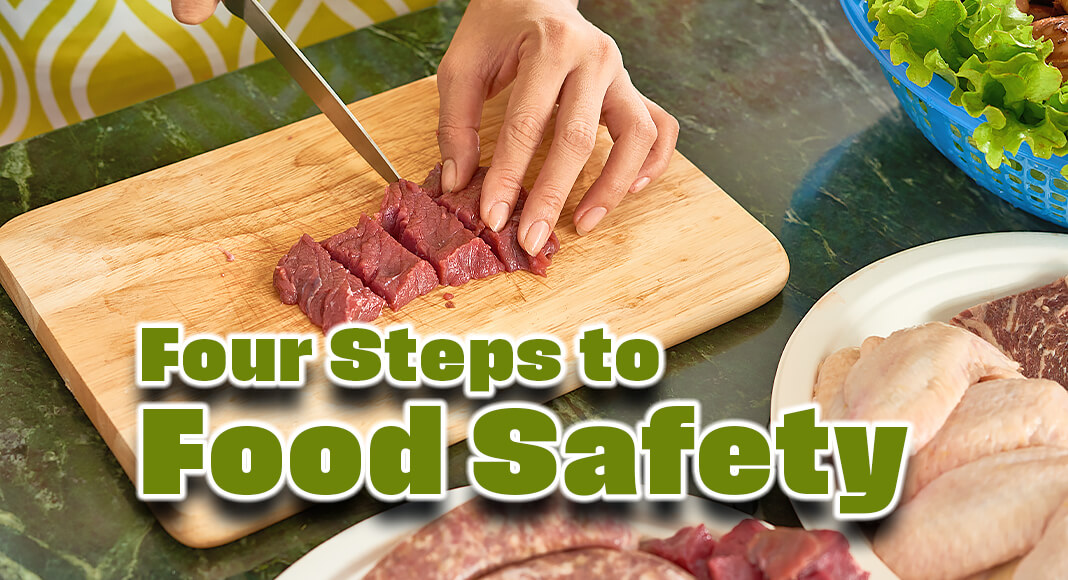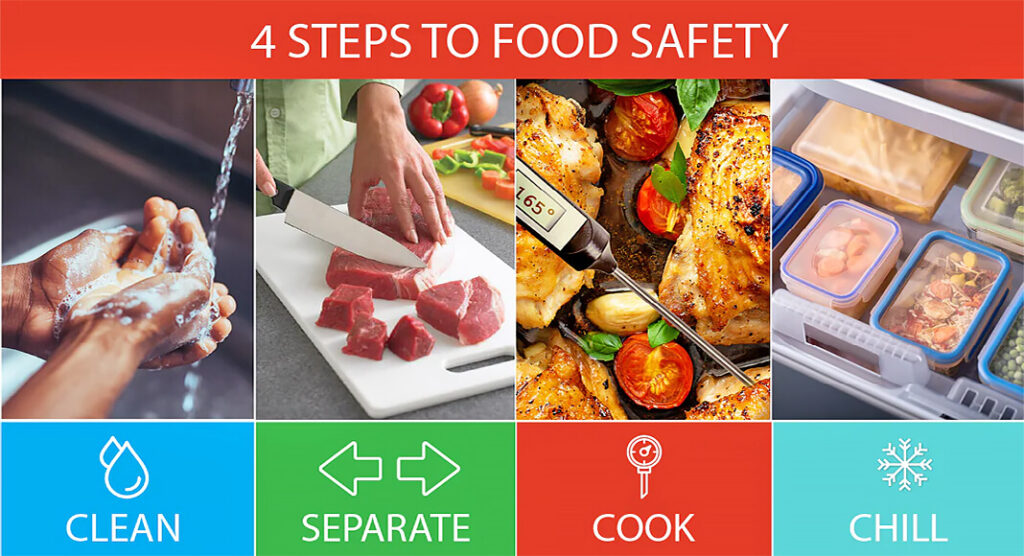
Mega Doctor News
- Advertisement -
Prevention steps and strategies

Clean: wash your hands and surfaces often.
- Germs that cause food poisoning can survive in many places and spread around your kitchen.
- Wash your hands for at least 20 seconds with soap and warm or cold water before, during, and after preparing food and before eating.
- Always wash hands after handling uncooked meat, chicken and other poultry, seafood, flour, or eggs.
- Always wash hands after handling uncooked meat, chicken and other poultry, seafood, flour, or eggs.
- Wash your utensils, cutting boards, and countertops with hot, soapy water after preparing each food item.
- Rinse fresh fruits and vegetables under running water.
Separate: don’t cross-contaminate.
- Raw meat, chicken and other poultry, seafood, and eggs can spread germs to ready-to-eat food unless you keep them separate.
- When grocery shopping, keep raw meat, poultry, seafood, and their juices away from other foods.
- Keep raw or marinating meat, poultry, seafood, and eggs separate from all other foods in the refrigerator.
- Store raw meat, poultry, and seafood in sealed containers or wrap them securely so the juices don’t leak onto other foods.
- Use one cutting board or plate for raw meat, poultry, and seafood and a separate cutting board or plate for produce, bread, and other foods that won’t be cooked.
- Raw chicken is ready to cook and doesn’t need to be washed first. Washing these foods can spread germs to other foods, the sink, and the counter and make you sick.
- If you choose to wash chicken, do so as safely as possible (see steps).
Cook to the right temperature.
- Food is safely cooked when the internal temperature gets high enough to kill germs that can make you sick.
- The only way to tell if food is safely cooked is to use a food thermometer. You can’t tell if food is safely cooked by checking its color and texture (except for seafood).
- Use a food thermometer to ensure foods are cooked to a safe internal temperature. Learn how to place the thermometer correctly in different food to get an accurate reading.
- Whole cuts of beef, veal, lamb, and pork, including fresh ham: 145°F (then allow the meat to rest for 3 minutes before carving or eating)Fish with fins: 145°F or cook until the flesh is opaque and separates easily with a forkGround meats, such as beef and pork: 160°FAll poultry, including ground chicken and turkey: 165°FLeftovers and casseroles: 165°F
- Check this chart for a detailed list of temperatures and foods, including shellfish and precooked ham.
- Microwave food thoroughly: Follow recommended cooking and standing times. Letting food sit for a few minutes after microwaving allows cold spots to absorb heat from hotter areas and cook more completely.
- Know your microwave’s wattage. Check inside the door, owner’s manual, or manufacturer’s website. If your microwave is high wattage (800 watts or more), use the minimum cooking time recommended. If it is low wattage (300–500 watts), use the maximum cooking time recommended.
- When reheating, use a food thermometer to make sure that microwaved food reaches 165°F.
Chill: refrigerate promptly.
- Bacteria can multiply rapidly if left at room temperature or in the “Danger Zone” between 40°F and 140°F. Never leave perishable food out for more than 2 hours (or 1 hour if exposed to temperatures above 90°F).
- Keep your refrigerator at 40°F or below and your freezer at 0°F or below, and know when to throw food out before it spoils. If your refrigerator doesn’t have a built-in thermometer, keep an appliance thermometer inside it to check the temperature.
- Package warm or hot food into several clean, shallow containers and then refrigerate. It is okay to put small portions of hot food in the refrigerator since they will chill faster.
- Refrigerate perishable food (meat, seafood, dairy, cut fruit, some vegetables, and cooked leftovers) within 2 hours. If the food is exposed to temperatures above 90°F, like a hot car or picnic, refrigerate it within 1 hour.
- Thaw frozen food safely in the refrigerator, in cold water, or in the microwave. Never thaw food on the counter because bacteria multiply quickly in the parts of the food that reach room temperature.
Information Source: CDC










